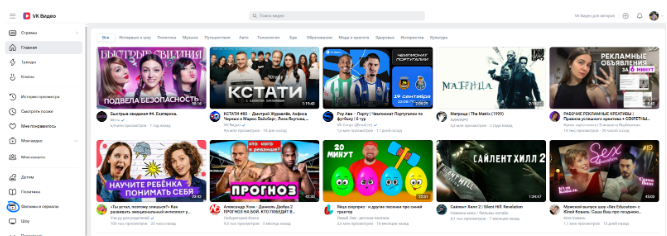
- Product

- Pricing
- Affiliate Program
- Use Cases
- Resource


A few years ago, YouTube dominated the video-hosting ecosystem, while other platforms competed only for small portions of traffic. By 2025 the situation shifted: restrictions, throttling, ad shutdowns, and ongoing access issues pushed both viewers and creators to search for alternatives. This made VK Video and Rutube the leading Russian platforms, each rapidly expanding and attracting new audiences.
Different professional groups evaluate these platforms from their own angle:
— Designers focus on interface and usability.
— IT specialists look at API stability and performance.
— Marketers and creators pay attention to promotion tools, monetization, and analytics.
Despite growth, many still question how stable and future-proof these platforms really are.
According to Mediascope, VK Video nearly doubled its audience in 2024. The main reason is the outflow from YouTube caused by restrictions, monetization limits, and access disruptions. Users looked for a reliable replacement, and VK Video became the most obvious choice.

However, the platform still struggles with recommendations and search. The system cannot personalize video suggestions with the same precision as YouTube, which affects retention and the overall viewing experience.
The key advantage of VK Video is deep integration with the broader VK ecosystem. Users do not need new accounts or additional onboarding. Videos, comments, and subscriptions are tied directly to an existing profile. For active VK users this creates a convenient “all-in-one” environment: feed, messenger, music, and video.

The downside is content overload. The homepage mixes memes, short clips, ads, community posts, and unrelated media. Videos get lost in the stream, and navigation becomes less intuitive. The search engine also pulls from the entire social network, not just the video database, often showing irrelevant posts, outdated materials, or streams.
One of VK Video’s strongest features is automatic video import from YouTube. For companies and creators with large content libraries, this saves significant time. Titles, descriptions, and thumbnails transfer automatically, reducing manual work and accelerating migration into the Russian ecosystem.
Manual upload is also simple: add a title, description, tags, and upload a file up to 5 GB. This suits most bloggers and short-form creators, but long webinars, courses, and multi-hour podcasts may exceed the limit.
Moderation works quietly in the background. Videos usually publish within minutes unless they’re large or uploaded during peak hours. There is no multi-step review or lengthy approval queue, which helps teams publish content quickly.
The biggest issue with VK Video is unpredictable content blocking. Videos touching on sensitive topics — politics, copyright, social issues — may be removed without clear explanations. The platform does not always provide detailed violation reports, leaving creators unsure about what triggered the block.
Large teams and media projects mitigate such risks by using tools like the MoreLogin browser. It allows safe work across multiple accounts with isolated IPs and cookies, reducing the chance of platform-side restrictions and helping distribute workload across employees.
Compared to VK Video, Rutube typically behaves more consistently in moderation, though it lags behind in interface quality and upload speed.
Rutube is perceived as the more stable option for long-term video storage. It suits educational platforms, companies, and creators who rely on predictable moderation and controlled access to archives. It also performs reliably with long videos, documentaries, lectures, and corporate broadcasts.
Both platforms have different strengths.
VK Video is ideal for:
fast content distribution
short formats and live interaction
creators who already have an audience on VK
integrated community building inside the VK ecosystem
Rutube is a better fit for:
long-form videos
educational platforms and companies
stable archives and predictable moderation
documentary or lecture-based content
In practice, many creators use both platforms, distributing content based on format and business goals.